In some regions of North America, laws prohibit the cultivation of vegetable gardens in front yards, sparking what has been dubbed ‘garden wars’ in local newspapers. In contrast, a long-standing tradition in France is to incorporate vegetables and flowers into the home landscape in a decorative manner. This unique approach to gardening, known as potagers, dates back centuries and features a mix of herbs and vegetables that can be used to create healthy soups (potages).
Kitchen Garden Rebellion
In the past, colonial-era gardeners in the New World cultivated ‘kitchen gardens’ in sunny spots with ample space. The front yard was often the ideal location for these plots. This tradition is slowly being revived in many American cities as laws relax regarding what can be grown in front yards. However, some gardeners residing in areas where front yard gardening is prohibited are taking a more unconventional approach.
These rebellious gardeners are turning to untended land that doesn’t belong to them, transforming it into edible landscaping through the art of guerrilla gardening. This movement, characterized by its bold and creative spirit, is redefining the boundaries between public and private space.
Rules to Remember
Before embarking on a front yard edible landscaping project, it’s crucial to familiarize yourself with local regulations. The last thing you’d want is to invest time and money into a garden only to be forced to rip it out due to non-compliance. It’s essential to understand what’s allowed and what’s not in your area. In addition to checking the rules, it’s vital to maintain a visually appealing and well-kept garden throughout all four seasons.
This means staying on top of tasks like watering, weeding, and harvesting produce before it goes bad. By doing so, you’ll ensure that your edible landscape remains attractive and inviting for years to come. Sharing your bounty with neighbors can also have a significant impact. Not only will they appreciate the fresh produce, but it will also help foster a positive association with edible landscaping in general. When planning your veggie garden, consider the following 15 ideas.
These include inspiration from six different edible landscapes and nine vegetables you might want to plant.
European Roots: Medieval Heritage
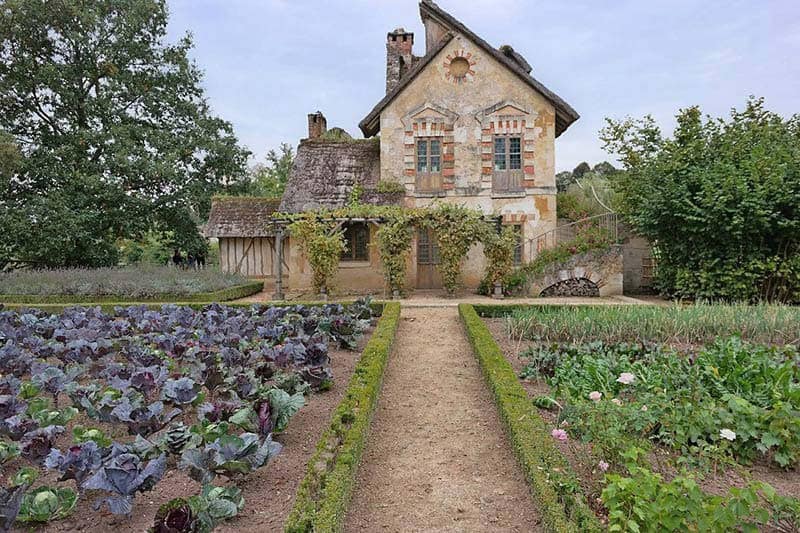
The concept of potagers originated in medieval monasteries, where monks cultivated gardens to beautify their surroundings and provide sustenance for their communities. This unique style of gardening also served as a source of medicine for the monks. As the Middle Ages progressed, the wealthy and peasants alike adopted the formal, geometric design of these gardens, characterized by carefully laid out paths that divided the beds into precise shapes.
There’s something undeniably charming about the sight of vibrant purple cabbages or the lush grape arbors framing a front door. Our suggestion is to draw inspiration from this traditional potager style and divide your garden beds into smaller, more intricate shapes. By doing so, you can create a visually appealing and harmonious outdoor space that’s reminiscent of these historic gardens.
Colorful Kale
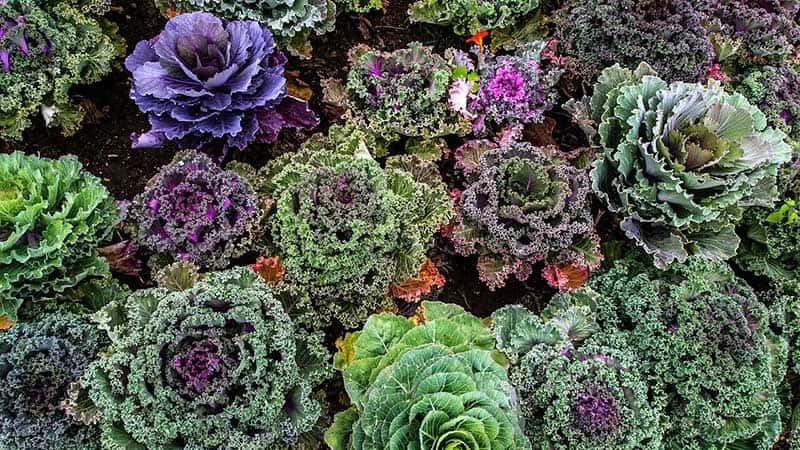
Kale has been a staple in gardens for over 2,000 years, its roots tracing back to the days when cabbage reigned supreme. While cabbage may have taken center stage during the Middle Ages, kale’s popularity has experienced a resurgence in recent times, thanks in part to the rise of juice bars and their signature green smoothies.
One of the things that sets kale apart is its unique visual appeal.
The frilly rosette shapes and vibrant colors of leafy kales make them an attractive addition to borders, adding a touch of whimsy and personality to any garden.
Our recommendation? Pair kale with the equally striking nasturtiums, whose bright oranges, reds, and greens provide a stunning contrast. And as if their beauty wasn’t enough, nasturtiums also offer the added bonus of edible flowers, making them a great choice for the adventurous cook.
Old Is New: Pioneer Kitchen Garden
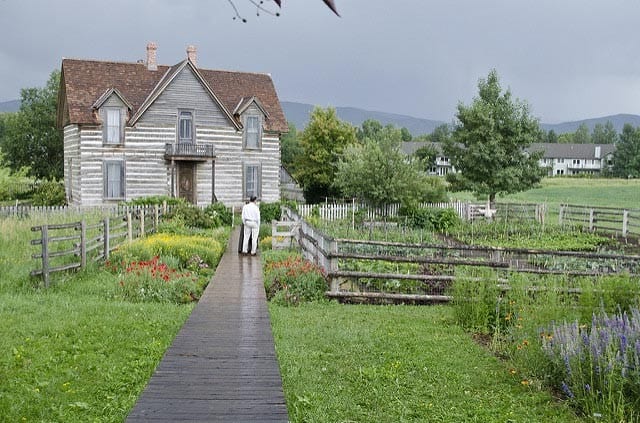
The Tinsley Living Farm, originally built by William and Lucy Tinsley in 1889, has been transformed into a unique part of the Museum of the Rockies. The farmhouse’s kitchen garden would have likely featured Montana heirloom plants such as European potatoes, a staple crop for many urban homesteaders today. What draws us to this charming setting is the picturesque display of flowers lining the rustic fence.
To take it to the next level, we propose incorporating climbing beans into teepee structures, adding a touch of vertical interest and whimsy to the space.
European Potato
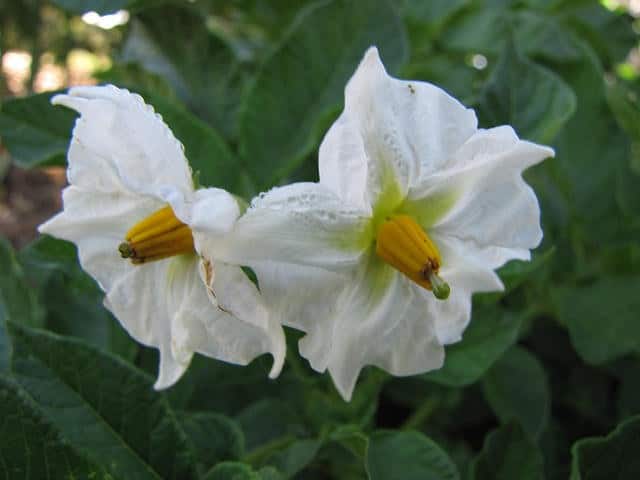
The humble potato, scientifically known as Solanum tuberosum, is often overlooked in terms of its aesthetic appeal. However, the lush and vibrant green foliage that surrounds it can actually make it a lovely addition to any garden. When planted as part of a border or used as a groundcover, potatoes can add a unique touch to your outdoor space. One of the most striking aspects of the potato plant is its colorful flowers, which come in a range of hues including blue, white, pink, and purple.
These vibrant blooms are not only visually appealing but also attract pollinators and other beneficial insects to the area. When it comes to companion planting, marigolds are an excellent choice for potatoes. The bright yellow and orange flowers of the marigold can help to repel pests that might otherwise target your potato crop, creating a more harmonious and productive growing environment.
Magnificent Rhubarb
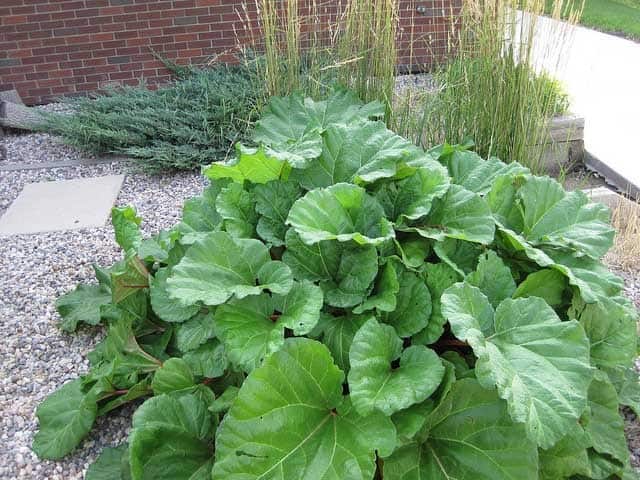
Rhubarb, a plant native to China, has become an heirloom staple in European and American pioneer gardens. Its remarkable fan-shaped leaves can be quite striking, measuring as large as those found on tropical plants. For optimal viewing pleasure, it’s best to give rhubarb some breathing room, placing it behind shorter companion plants or featuring it as a solo statement piece in your garden border.
When it comes to the most striking appearance, the variety with bright red stalks is hard to beat – whether growing in your garden or showcased in a delicious pie. However, it’s essential to remember that rhubarb’s leaves are toxic and should not be consumed or composted.
Tidy Contemporary: Raised Beds
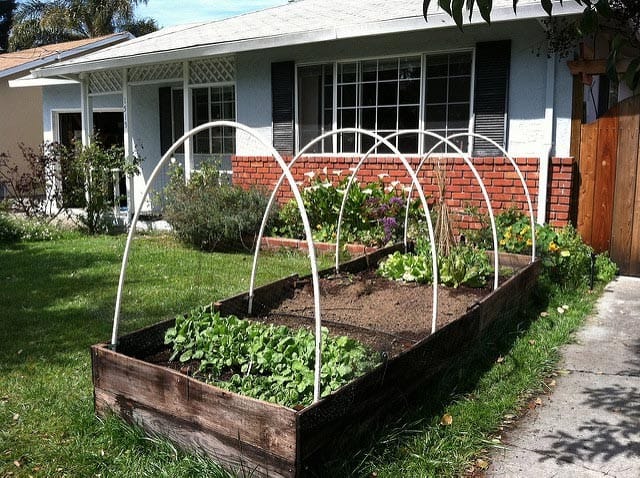
Raised bed gardens not only provide an aesthetically pleasing form, but also offer control and organization. The tidiness they bring is a bonus for neighbors who appreciate well-manicured yards. One particular raised bed stands out with its innovative use of hoops to create a warming tunnel during the cold winter months by covering it with plastic.
This clever design not only extends the growing season but also allows for year-round cultivation of leafy greens, such as salad mix, which can be harvested in abundance come late autumn. Our recommendation is to consider installing multiple raised beds to maximize space and yield.
Leeks and Lettuce
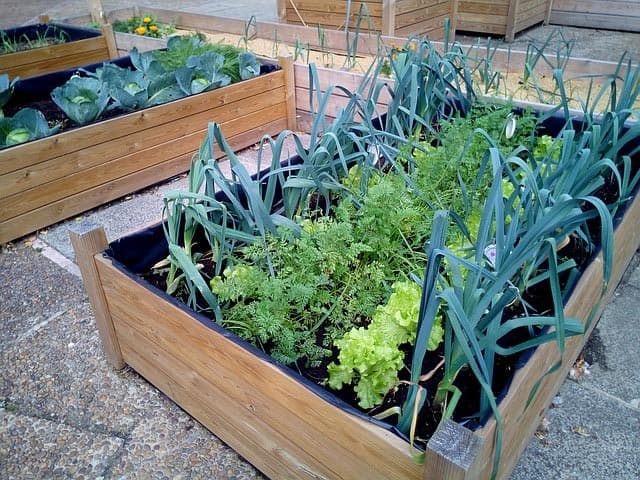
The humble leek boasts an intriguing combination of sturdy, upright stalks and more relaxed, sprawling leaves. This visual dichotomy provides a pleasing contrast to the rounded, ruffled forms of the lettuce nearby. Furthermore, the blue-green hue of the leeks harmonizes nicely with the color palette of the cabbages in the adjacent bed.
In our opinion, incorporating red-veined Swiss chard as a back-of-row companion plant for the leeks would not only add a pop of color but also create a visually appealing juxtaposition.
Hell Strips: Crops by the Curb
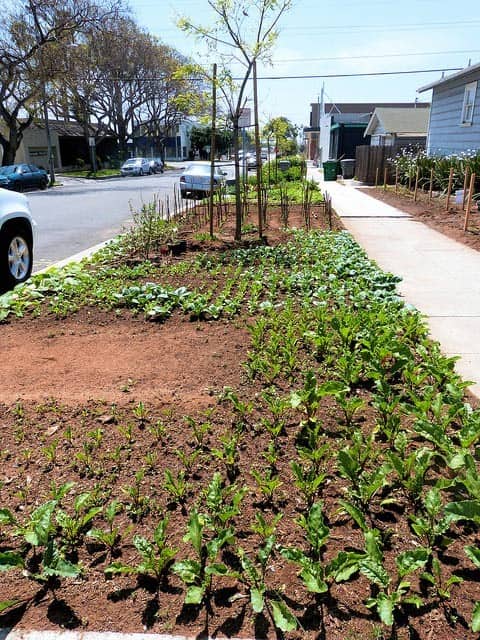
Lush Compact Basil
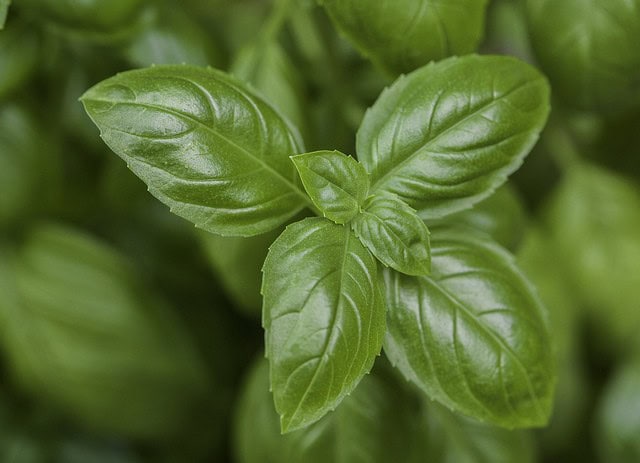
Basil’s subtle charm is not just its flavorful aroma, but also its unique characteristics that set it apart from other herbs. One notable trait is its preference for drying out slightly between waterings – a quirk that’s essential to understand when cultivating this herb. Furthermore, the intoxicating scent of basil can be irresistible to passersby, so don’t be too surprised if strangers take a sniff (or a pinch!) as they stroll by.
Our appreciation for basil extends beyond its glossy green leaves to include the stunning purple varieties. To bring out its best features, we recommend growing it alongside mixed lettuce borders in partial shade – an arrangement that will surely delight anyone who lays eyes on it.
Cheerful Chives
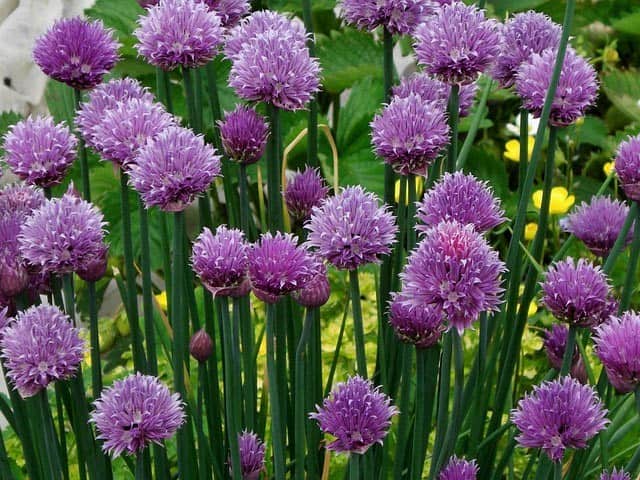
Chives, part of the Allium family, are renowned for their resilience in withstanding freezing temperatures, allowing them to thrive when spring arrives. As an edge planting, chives can quickly thicken and form a lush mat. The plant’s grass-like foliage is topped with small, edible flowers that display a charming lavender hue. Not only do chives add a pop of color to the garden, but they also serve as natural pest deterrents for surrounding plants.
We’re particularly fond of the harmonious blend of green and lavender, which creates a refreshing visual effect. For a bold twist, consider pairing chives with red-hued flowers or foliage, resulting in a striking combination. When it comes to companion planting, chives complement dwarf cherry tomatoes particularly well.
Guerrilla Gardeners: Fighting Neglect
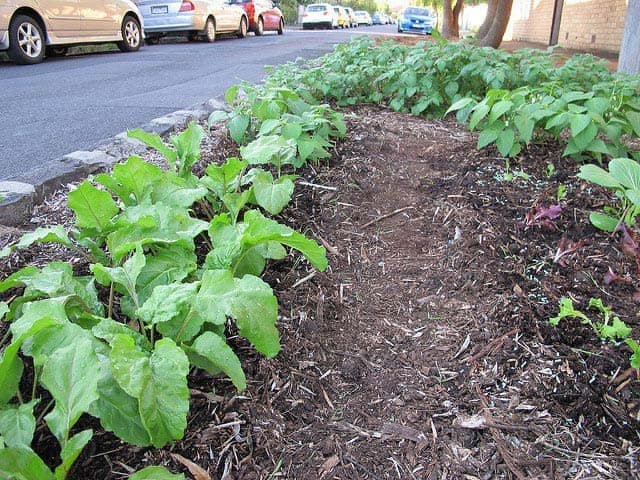
In recent years, guerrilla gardeners have been transforming neglected urban spaces into vibrant oases since their inception in 1970. According to Catherine Howard’s article in The Guardian, these eco-warriors are breathing new life into abandoned areas by replacing raggedy turf with a diverse array of edible and flowering plants. This particular space has been revitalized with the addition of spinach, providing a fresh source of nutrients for local communities.
What stands out is the rich, loamy soil that appears to have been dramatically improved through the efforts of these dedicated gardeners. Our recommendation is to further enhance this urban haven by incorporating flowering herbs like borage, which boasts stunning star-like blue blossoms that will provide a vital food source for pollinators like bees.
Dramatic Red-Veined Beets
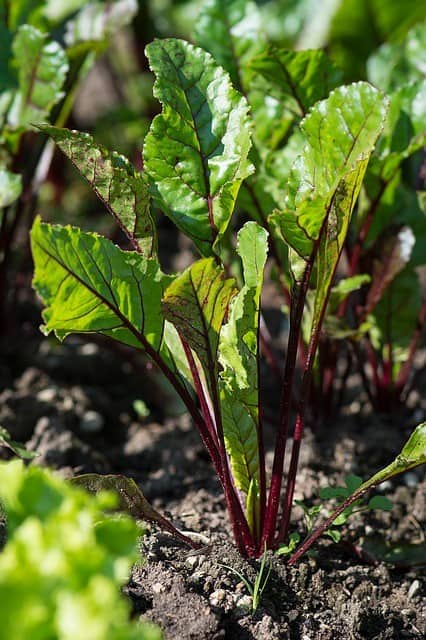
Beets are often celebrated for their vibrant ruby-red color when used in salads, but they also boast beautiful foliage that can add visual interest to the garden. As one of the first vegetables of spring, many types of beets feature red stems and rumpled, red-veined leaves that create a striking display. Not only do these unique characteristics make for a dramatic presentation, but cooked beet greens are also packed with nutrients and offer a delicious addition to any meal.
We particularly love how beets can be massed together or planted as a long border, creating a stunning visual effect in the garden.
Edible Estates: Feast of Color

Envision yourself living in a spacious residence with a sprawling yard, where the possibilities of transforming it into a thriving oasis are endless. Picture this: a vibrant tapestry of colors and textures, as a lush lawn gives way to a medley of vegetables and flowers. This imaginative scenario is brought to life through Fritz Haeg’s thought-provoking book, ‘Edible Estates: Attack on the Front Lawn.’ The end result? A feast for the eyes that doubles as a bounty of edible delights.
What we adore about this kitchen garden is its whimsical, cottage-garden charm. Our suggestion? Introduce a crabapple tree to the mix, not only for its stunning spring blooms but also for the added bonus of homegrown jelly-making possibilities.
Aromatic Sweet Marjoram
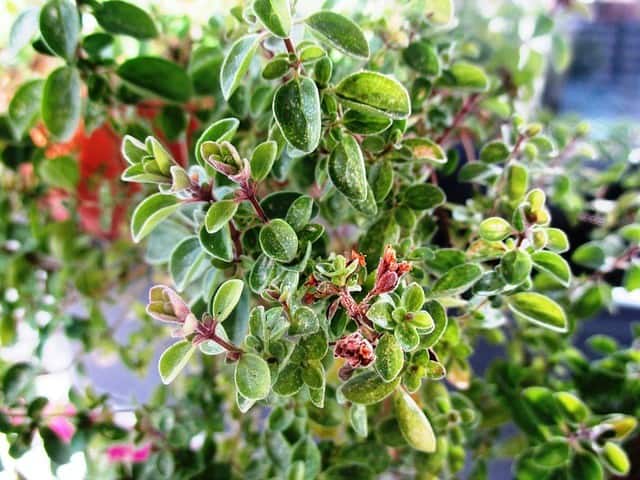
Marjoram’s unique blend of rosy stems and apple-green foliage is an attractive addition to any garden. Depending on the variety, it can grow anywhere from 12 to 36 inches tall. As a drought-tolerant herb, sweet marjoram thrives in drier areas and makes for a lovely choice when lining paths. The aromatic scent wafts through the air, tantalizing senses as you brush past it on a warm summer day.
One of its greatest charms is its ability to attract bees and butterflies, adding a touch of whimsy to your garden’s ecosystem. If you’re looking to share in the joy, consider sharing sprigs with friends and neighbors who appreciate its flavor in meat dishes.
Lacy Looking Dill
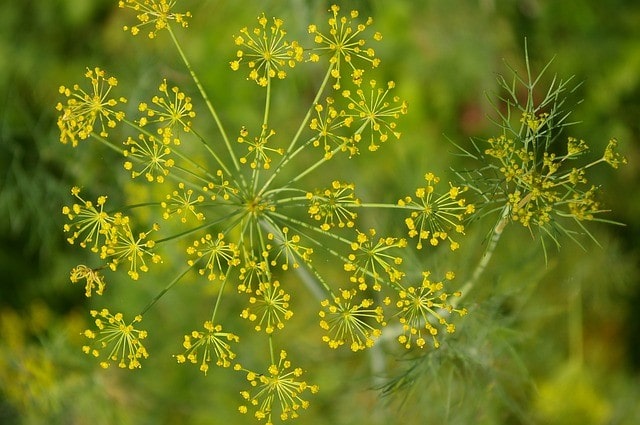
Dill’s delicate flower spikes create an airy, lacy appearance when viewed from afar. Upon closer inspection, the bright green-to-yellow seed heads resemble bursts of fireworks in a vibrant display. This versatile herb is not only prized for its flavor in pickling, but also shines in egg and pasta dishes, adding a savory depth to any meal. What’s more, dill is a haven for bees and butterflies, providing them with a sweet source of nectar.
However, it’s worth noting that dill can be problematic when planted near carrots, as cross-pollination can occur. To avoid this issue, consider keeping the two plants separate.
Design Considerations
When designing an edible landscape, it’s essential to consider not only the aesthetic appeal and yield of your garden but also its water consumption. Vegetables, in particular, require a significant amount of moisture to thrive, even when irrigated carefully. Herbs, on the other hand, are relatively more drought-tolerant. According to botanists, an edible landscape can absorb roughly the same amount of water as a lawn does, yet it offers a bounty for both humans and pollinators.
Before abandoning your lawn entirely in favor of edibles, however, take a moment to appreciate the role grass plays in preserving moisture for tree roots. If you do decide to remove the grass, be sure to provide supplemental watering specifically for the trees, as their root systems will otherwise struggle without this vital resource.